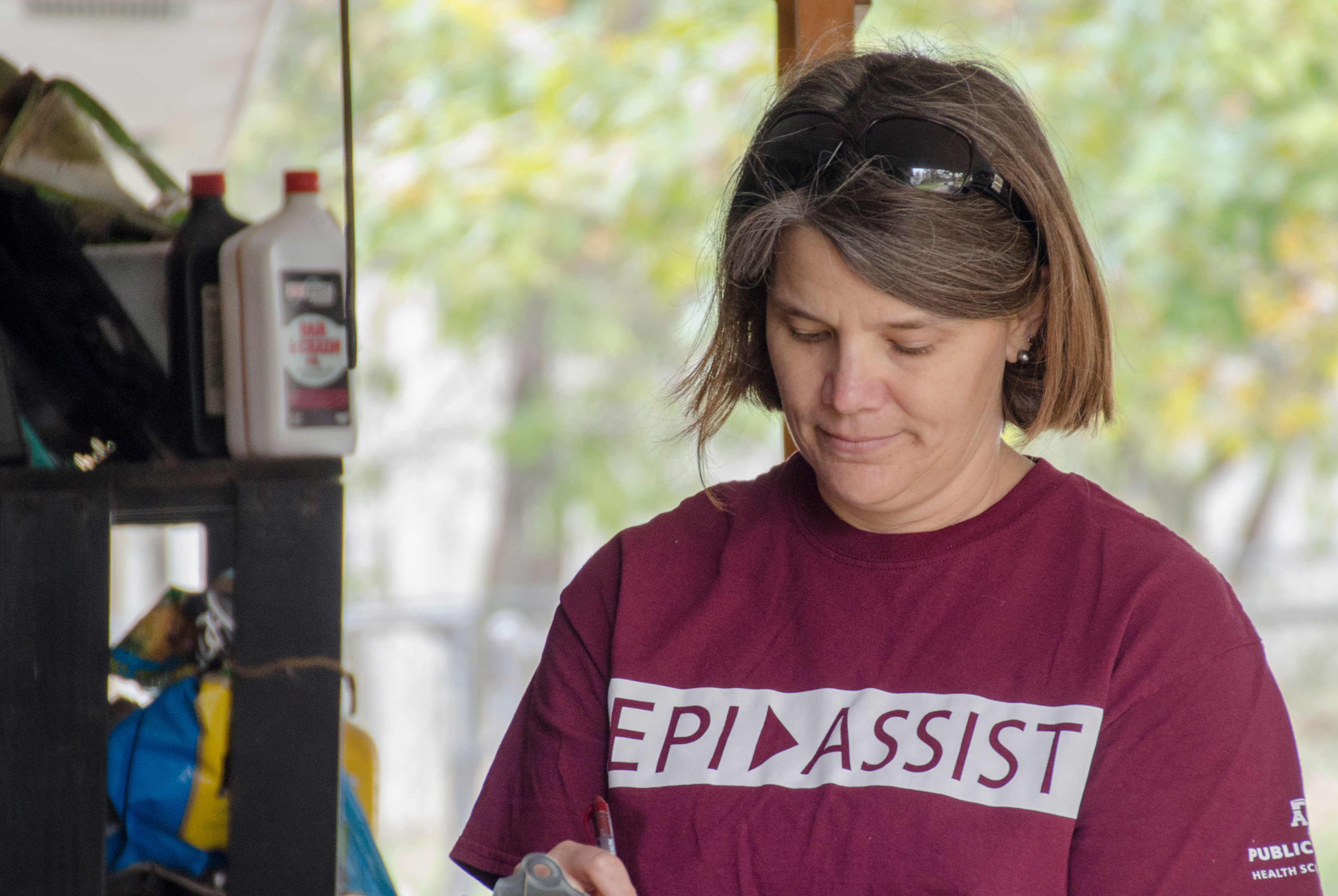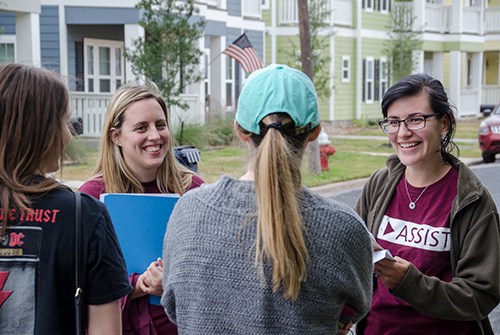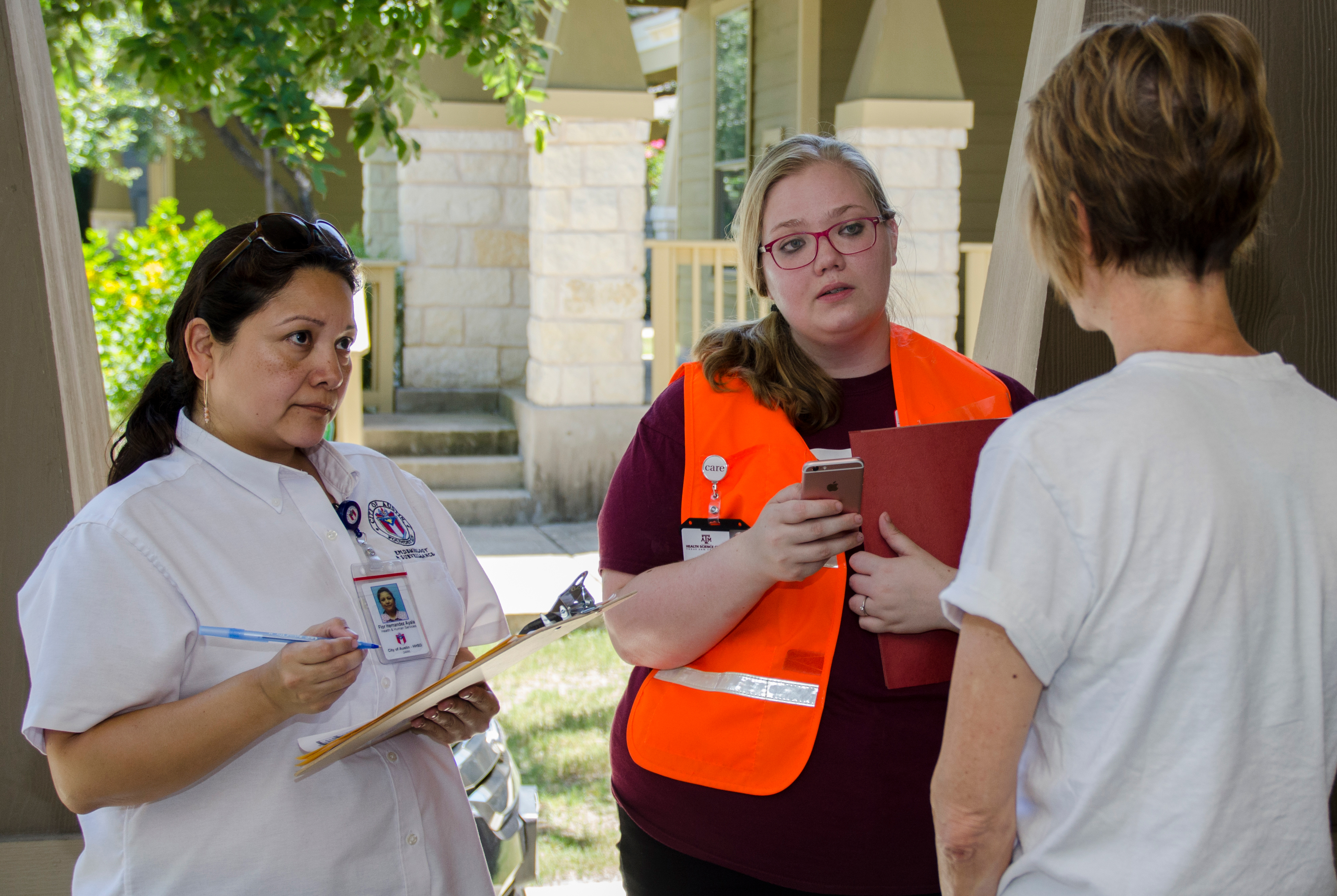Karla Ruiz ’15 is fascinated by diseases, especially how and why bacteria and viruses make people sick. She chose to turn her fascination into a career as an epidemiologist by earning a master’s degree from the Texas A&M University School of Public Health. As an EpiAssist volunteer, she sharpened her professional research and interviewing skills—competencies she now credits with helping her land her current job as a foodborne disease epidemiologist with the Galveston County Health District.
EpiAssist is a service-learning program open to undergraduate and graduate students at the School of Public Health that addresses the critical shortage of trained public health professionals by providing much-needed support and services to local, regional and state health departments and agencies. These services can include assistance with activities that protect the public’s health, such as public health surveillance, disaster preparedness planning, community health assessment surveys and estimating surge capacity during public health emergencies such as natural disasters or disease outbreaks.
 Jennifer Horney brings nearly 20 years experience in preventing and studying disease outbreaks and other public health disasters to the EpiAssist program in the School of Public Health.
Jennifer Horney brings nearly 20 years experience in preventing and studying disease outbreaks and other public health disasters to the EpiAssist program in the School of Public Health.
The program was created by Jennifer Horney, an associate professor at the School of Public Health. Her experience working on dozens of infectious disease outbreaks and responding to public health disasters, including Hurricanes Charley, Isabel, Katrina, Wilma and Irene, brought to her attention the need for a program like EpiAssist. The “epi” in EpiAssist stands for epidemiology, the study of how often diseases occur in different groups of people and why, such as from an outbreak or natural disaster.
EpiAssist projects have included working with the Department of State Health Services (DSHS) in Austin on issues of concern to many Texans, including analyzing data related to food safety and swift water rescues associated with spring floods. Other students assisted Harris County officials in assessing resident preparedness for hurricane season. Locally, students worked with the Brazos County Health Department in 2015 to investigate an outbreak of Shigella, an infectious disease that causes about 500,000 illnesses per year in the U.S. and 3,000 in Texas. EpiAssist students stepped up again in August 2016 to assist in the response to an unusually early outbreak of seasonal influenza on the Texas A&M campus.
Ready When Needed
“Field experiences like EpiAssist emphasize reciprocity, ensuring a balance between meeting the needs of both the community and our students,” said Horney. “Students are eager for real-life experiences outside of the classroom, and health departments and agencies often need extra assistance, especially when emergencies or disease outbreaks occur.”
For example, in August 2016, Kendall Pye ’18, a master’s student in biostatistics, and her volunteer partner Mallika Mather ’18, a master’s student in epidemiology, conducted a literature review and reported on programs aimed at decreasing drowning rates at public lakes and rivers for the Travis County Health and Human Services Department. They focused on loaner life jacket programs that had been successful in reducing drowning rates in other cities.
 Students in EpiAssist gain real-life experience while giving back to communities in need with disaster relief programs.
Students in EpiAssist gain real-life experience while giving back to communities in need with disaster relief programs.
In October, less than two months after Pye and Mather turned in their report, Travis County announced it would partner with Colin’s Hope Foundation to start a loaner life jacket program which began this spring.
Since January 2015, more than 60 public health students have completed more than 3,000 hours of volunteer service on approximately 40 projects. Many projects involve conducting field data collection and surveying residents to help local health officials determine health needs in the community and identify preventative measures that need to be put in place.
In 2015, Brittany Burgess ’17 was paired with a staff member from DSHS Region 7 for the Bastrop County Wildfire Recovery and Preparedness Assessment, a face-to-face survey designed to measure the pace of recovery among those impacted by the 2011 Bastrop County wildfires. She called the project an “eye-opening” experience.
“My partner and I battled muddy, rained out roads just to reach some of the homes in our designated survey zone,” said Burgess, a master’s student in epidemiology. “During the first interview, as I heard peoples’ emotions, stresses and stories, I was struck by how surveys like this help communities move forward. Questions went from words on paper to building blocks toward effective preventative measures, evidence for health needs and information for the future. It was in that moment that I knew I was hooked. I had found my career.”
A Growing Future
Due to EpiAssist, various agencies are recognizing the benefits of investing in Texas A&M School of Public Health students by providing additional training they might not otherwise have. To date, students have received 250 hours of training from agencies such as the U. S. Centers for Disease Control and Prevention and the Texas Department of State Health Services, which enhances students’ marketability following graduation.
 By surveying residents, EpiAssist members help local health officials determine community health needs and identify preventative measures that should be put in place.
By surveying residents, EpiAssist members help local health officials determine community health needs and identify preventative measures that should be put in place.
Tyler Tipton ’15, an epidemiology graduate who is currently a public health planner for the Galveston County Health District, felt his participation in the Harris County hurricane preparedness assessment provided him invaluable experience.
“Interviewing people really put into perspective how important the data was—not only for us, but for residents as they were reminded of the importance of having a plan of action during an emergency,” Tipton said. “I like to think we were the impetus for some people to truly think about what they would do in an emergency.”
Horney believes the program will grow as word about EpiAssist spreads among public health officials in Texas, but an increase in requests from health departments farther away from College Station will require a more formal and dedicated structure. An operational endowment for the program would help Horney employ staff who could work closely with public health officials and support students’ travel, lodging and project supplies.
From a student standpoint, Brittany Burgess is adamant about the program’s value.
“EpiAssist builds vital professional networking, field experience and a keen insight to what it really means to work in public health,” she said.
Ranked since 2008 in the top 25 best graduate schools of public health by U.S. News and World Report, the Texas A&M School of Public Health is committed to transforming public health through interdisciplinary inquiry, innovative solutions and development of leaders through the Aggie tradition of service to engage diverse communities worldwide.